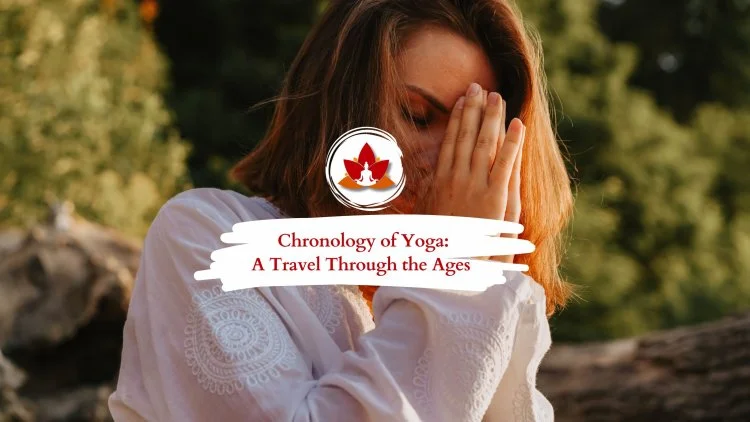Understanding the Origins of Yoga – When Was Yoga Discovered?

Introduction: The Ancient Roots of Yoga
When we ask “When was yoga discovered?” we are delving into one of humanity’s oldest spiritual and philosophical traditions. Yoga is not just a form of physical exercise—it is a holistic discipline that unites the body, mind, and spirit. Its origins trace back thousands of years to ancient India, where sages sought ways to transcend suffering and achieve enlightenment. The discovery of yoga marks a milestone in human consciousness, as it represents the pursuit of inner harmony and universal connection.
The Earliest Evidence of Yoga Practice
The question “When was yoga discovered?” finds its earliest answers in the Indus Valley Civilization, which existed around 3000 BCE to 1500 BCE. Archaeological findings from sites like Mohenjo-Daro and Harappa depict seals showing figures in meditative postures that resemble yogic poses, especially those related to meditation and spiritual awareness. These artifacts suggest that the foundations of yoga were already being laid during this ancient civilization.
While it is impossible to pinpoint an exact date, these findings confirm that the roots of yoga predate written history. Yoga likely evolved organically as an inner exploration—a way for humans to connect with nature, their breath, and higher consciousness.
Yoga in the Vedic Period
To further understand when yoga was discovered, we must turn to the Vedic period (1500–500 BCE). The Vedas, particularly the Rigveda, are among the oldest known scriptures where yogic principles appear. The word “Yoga” comes from the Sanskrit root “Yuj”, meaning “to unite” or “to join.” In the Vedas, yoga was not yet a physical discipline but rather a spiritual practice centered on meditation, sacrifice, and self-realization.
During this era, yoga was primarily practiced by rishis (sages) who meditated in isolation to connect with divine energies. The rituals, chants, and meditations described in the Vedas laid the groundwork for later philosophical developments in yoga, particularly in the Upanishads, which explored deeper metaphysical concepts.
Yoga in the Upanishads: Inner Awakening
The Upanishads (800–500 BCE) expanded the meaning of yoga beyond ritual practices to inner awareness. They explored meditation (dhyana), self-realization (atma-jnana), and the ultimate union of the individual soul (atman) with the universal consciousness (Brahman).
This period marks a major transformation in how yoga was perceived. The focus shifted from external sacrifices to internal reflection. When we ask “When was yoga discovered?” the Upanishadic era becomes a crucial stage in its evolution, emphasizing introspection and inner discipline over ritualistic worship.
Patanjali and the Classical Age of Yoga
If we seek a more formalized system, the answer to “When was yoga discovered in its classical form?” leads us to Patanjali, a sage who lived around 200 BCE to 400 CE. Patanjali compiled the Yoga Sutras, a foundational text that systematized the practice into Eight Limbs of Yoga (Ashtanga Yoga).
These limbs—ethical guidelines, physical postures, breath control, withdrawal of senses, concentration, meditation, and absorption—outlined a complete path to spiritual liberation (samadhi). Patanjali’s work marked the official recognition of yoga as a structured discipline, balancing physical, mental, and spiritual growth.
Thus, while yoga existed for millennia before Patanjali, his compilation is often regarded as the point when yoga became codified and accessible for future generations.
The Evolution of Yoga Through the Ages
After the classical period, yoga continued to evolve. During the Post-Classical and Medieval periods, different branches emerged, such as Hatha Yoga, Bhakti Yoga, and Jnana Yoga.
-
Hatha Yoga, developed around the 11th century, focused on physical postures (asanas) and breath control (pranayama) to prepare the body for meditation.
-
Bhakti Yoga emphasized devotion and love toward the divine, while
-
Jnana Yoga centered on self-inquiry and wisdom.
These variations show that yoga was not static—it adapted to the cultural, philosophical, and spiritual needs of each era.
When Was Yoga Discovered in the Modern World?
The modern revival of yoga began in the late 19th and early 20th centuries, when Indian teachers introduced it to the West. Figures like Swami Vivekananda, Sri T. Krishnamacharya, and Paramahansa Yogananda played crucial roles in spreading yoga’s philosophy and techniques globally.
Today, yoga is practiced by millions worldwide as both a spiritual and physical discipline. While many people associate yoga with fitness, its essence still lies in inner awareness and balance—a reminder of its ancient discovery thousands of years ago.
The Timeless Discovery of Yoga
So, when was yoga discovered? The most accurate answer is that yoga was not “discovered” at a single point in time—it was realized. Yoga emerged naturally from humanity’s quest to understand existence, balance the mind, and harmonize with the universe.
Over thousands of years, it evolved from meditative rituals to a sophisticated philosophy encompassing body, mind, and spirit. The journey of yoga—from the seals of the Indus Valley to the studios of the modern world—reflects our timeless desire for peace, purpose, and self-realization.
Conclusion: The Eternal Relevance of Yoga
The history of yoga teaches us that it is far more than a trend—it is a living tradition. Whether practiced on ancient riverbanks or modern mats, yoga continues to offer the same gift: connection. Asking “When was yoga discovered?” ultimately leads us not just to a historical answer, but to a personal one.
Each time we sit in stillness, breathe mindfully, or stretch our bodies with awareness, we rediscover yoga anew—just as the sages did thousands of years ago.
- Art
- Causes
- Crafts
- Dance
- Drinks
- Film
- Fitness
- Food
- Jogos
- Gardening
- Health
- Início
- Literature
- Music
- Networking
- Outro
- Party
- Religion
- Shopping
- Sports
- Theater
- Wellness


